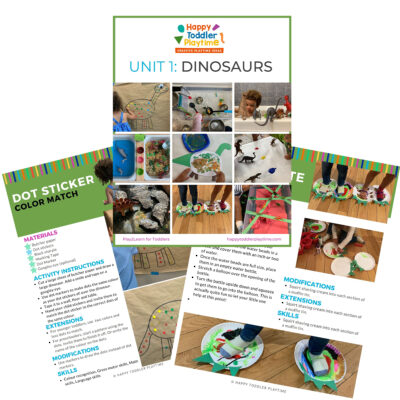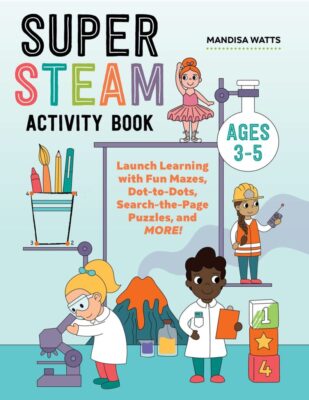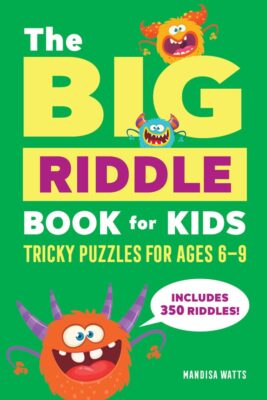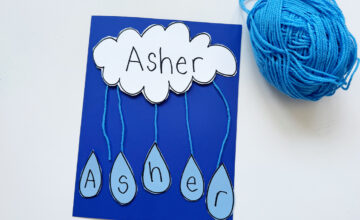
Diving into the world of science doesn’t always require a lab coat and beakers; sometimes, all you need is a trip to the kitchen pantry. The Rainbow Milk Experiment is a perfect example of how everyday items can transform into an exciting and colorful learning experience. This activity not only captivates the visual senses but also introduces young minds to the intriguing concepts of chemistry and physics right from the comfort of home. Using milk, dish soap, and some creativity, children can witness a mesmerizing display of colors that swirl and mix as if by magic. But there’s science behind this magic, primarily the interaction between the fat molecules in the milk and the dish soap, creating a burst of kaleidoscopic movement that’s both educational and utterly fascinating.
Science Behind the Rainbow Milk Experiment
The science behind this experiment lies in the properties of milk, which contains fats and proteins, and the chemistry of dish soap, designed to break down grease. When dish soap is added to the milk, it races around to bond with the fat molecules, causing the swirling motion that moves the colors. This visual spectacle not only demonstrates the principles of chemical reactions but also provides a hands-on exploration of concepts like surface tension and the interaction between different substances. It’s a simple yet profound way to introduce children to the idea that even the milk on their breakfast table is full of scientific wonders.

Material List:
- Shallow dish
- Milk (whole milk works best for more dramatic effects)
- Cotton pads
- Washable markers in colors of the rainbow
- Dish soap
Rainbow Milk Experiment Step-by-Step Instructions:
1. Prepare the Rainbow Cotton Pads:
Begin by gathering your cotton pads and washable markers in a rainbow of colors. Lay out the cotton pads on a flat surface where you have enough room to get creative. Start by drawing rainbows across the pads, using the colors in the order you prefer. Feel free to get inventive with the patterns: try placing red in the center for some pads and on the edge for others to see how the position of colors might influence the swirling effect later on. For a twist, cut some of the cotton pads in half to form semi-circles or arches, and arrange the rainbow colors with red on the outer edge, mimicking a more traditional rainbow arch. This variation in designs will add an extra layer of excitement when you observe how differently each pad reacts in the milk.



2. Milk Setup:
Choose a shallow dish that’s broad enough to allow multiple cotton pads to float without crowding each other. Pour whole milk into the dish until the bottom is completely covered, but there’s no need for the milk to be more than a few millimeters deep. Whole milk is recommended because its higher fat content enhances the visual effect of the experiment. Make sure the milk is at room temperature to ensure the best reaction.

3. Dish Soap Magic:
Now for the secret ingredient that sets everything in motion: the dish soap. On each of your prepared rainbow cotton pads, gently place a few small drops of dish soap. Aim to distribute the drops evenly across the pads, but there’s no need to saturate them. The dish soap acts as a disruptor to the surface tension of the milk, which will cause the colors to spread and swirl when introduced to the liquid.


4. Launch the Experiment:
It’s time to start the experiment! Carefully pick up the cotton pads and lower them one by one into the dish of milk. If possible, try to add them to the milk at roughly the same time to simultaneously witness the reaction of multiple pads. This is where you’ll see the magic unfold as the dish soap on the cotton pads reacts with the milk. The colors will begin to move and swirl in beautiful, unpredictable patterns, creating a mesmerizing display of flowing rainbows. Each pad might behave slightly differently based on the arrangement of colors and the amount of soap, making for a unique spectacle every time.

How They Played:
My kids were eager to jump into this activity, each taking turns coloring the cotton pads with vibrant rainbows. The twins, both 4, were fascinated by how the colors started to spread and dance upon touching the milk, while my 7-year-old made predictions about how the patterns would change. They experimented with different placements and quantities of dish soap, observing how each variation affected the movement of colors. It turned into a delightful afternoon of hypothesis, observation, and lots of giggles.

Tips for Success:
- Use whole milk for more dramatic effects since its higher fat content creates more movement.
- Lay out a protective cover or do the experiment in an area that’s easy to clean, as things might get a little messy.
- Encourage kids to predict what will happen before dropping the cotton pads into the milk to foster critical thinking.
Skills Learned:
- Scientific Inquiry: Kids learn to ask questions, make predictions, and observe outcomes, fundamental skills in the scientific method.
- Understanding Chemical Reactions: This experiment provides a basic introduction to chemistry, demonstrating how substances interact in unexpected ways.
- Creativity: Drawing the rainbows allows children to express their creativity and see how art can blend with science.
- Patience and Observation: Watching the colors swirl and change teaches patience and attention to detail as kids take in the results of their experiment.
The Rainbow Milk Experiment is more than just a craft; it’s a doorway to discovery, offering a captivating blend of science, art, and hands-on fun. It’s a vivid reminder that sometimes, the most extraordinary lessons come from the simplest materials.
Play2Learn Toddler & Preschool Programs for Curious Toddlers

There is no limit to your toddler’s energy and curiosity. That energy and curiosity although a joy can be challenging at times. Their interest in just about everything around them is what makes them great learners. One and two year olds can soak up so much just from their senses!
But as a teacher or parent that thirst for learning can be exhausting. That is why I created this toddler and preschooler program. To help you get the most out of this time with your curious toddler without having to come up with creative ways to play and interact with them.
Play2Learn for Toddlers includes 20 Units for toddlers. Each 2-week toddler unit has 20 super easy to set up and engaging activities for toddlers 18 months to 3 years.
Play2Learn Preschool which includes 20 Units for preschoolers. Each 2-week preschoolers unit has 20 unique and easy to set up and engaging activities for preschoolers 3 years to 5 years. That’s over 800 learning activities for your toddler and preschooler at your fingertips! So many ideas you and your child will never be bored again!
These toddler and preschool lesson plans and activities will definitely keep you and your toddler and preschooler busy playing and learning!
Click here for more information: Play2Learn
Book: Exciting Sensory Bins for Curious Kids

Did you know I wrote a book of sensory bins? Click here for more information Exciting Sensory Bin for Curious Kids. Or grab your copy at Amazon.
Boring afternoons are made exciting with awesome animal-based bins, like Salty Shark Bay or Yarn Farm. Pretend play bins like Birthday Cake Sensory Play or Bubble Tea Party encourage creativity and imagination. And your kids will have so much fun they won’t even know they’re getting smarter with STEAM (science, technology, engineering, art and math) activities like Sink or Float Soup, Magnetic Letter Hunt or Ice Cream Scoop and Count.
Designed for toddlers 18 months and up.
Book: Super STEAM Activity Book for Kids

Learning all about science, technology, engineering, art, and math sets kids up for scholastic success―and it can be so much fun! Watch kids enjoy building STEAM skills as they color friendly fish, help water find its way to tree roots, solve math problems with mazes, and more.
Find out more and grab your copy here.
Designed for preschoolers 3 years old and up.
Book: Big Book of Riddles for Kids

Riddle me this: What’s an exciting way to practice critical thinking while having a blast? The Big Riddle Book for Kids, of course! From hilarious puns to tough brain teasers, kids can build problem-solving skills with hundreds of riddles tha. t show them how to think outside the box.
- 350 riddles for kids—Have hours of fun with riddles, puns and jokes, and math and logic puzzles that’ll get their wheels turning!
- Level up their skills—Riddles get trickier as kids progress through the book, challenging them as they get better at solving puzzles!
- Double-check their work—Kids can check their answers in the back of the book with a handy answer key.
Help children expand their minds while having fun with this puzzle book for kids!
Designed for kids ages 6 years old and up.
TV Show: Curious Crafting
I’m so excited to share my crafting TV show Curious Crafting which launched in July 2022 on TVOkids and TVOkids YouTube! Season 2 aired in August 2023! My show was also nominated in 2023 for Best Live Action Preschool Series by the Youth Media Alliance Awards of Excellence.
Curious Crafting Season 1 is also now airing in Australia on ABC! Watch it here!
Set in the ultimate crafting space, Curious Crafting is a short form pre-school age series about the joy of making crafts. I lead a rotating cast of adorable little preschoolers (including my own) making magic out of common household objects.
In each episode we transform recycled items into magical crafts like a milk carton school bus, paper bag puppet or cotton pad turtle. The crafters learn and laugh their way through each activity while demonstrating what their young imaginations can create.
Curious Crafting shares the adventure and joy of making art with takeaway lessons for creating crafts at home.
This show designed for toddlers and preschoolers 2.5 years old and up.

Rainbow Milk Experiment
Materials
- Shallow dish
- Milk (whole milk works best for more dramatic effects)
- Cotton pads
- Washable markers in colors of the rainbow
- Dish soap
Instructions
- Prepare the Rainbow Cotton Pads: Use the markers to draw rainbows on the cotton pads. Experiment with different designs – some with red starting in the middle, others with red on the outside. For variety, cut the cotton pads in half and create arches with the colors in different orders.
- Milk Setup: Fill a shallow dish with milk. The milk should cover the bottom completely but doesn't need to be too deep.
- Dish Soap Magic: Place a few small drops of dish soap on the decorated cotton pads. This will be the catalyst for the magic to happen.
- Launch the Experiment: Carefully drop the cotton pads into the milk. Try to add them around the same time to watch the colors move, swirl, and create a stunning display.





